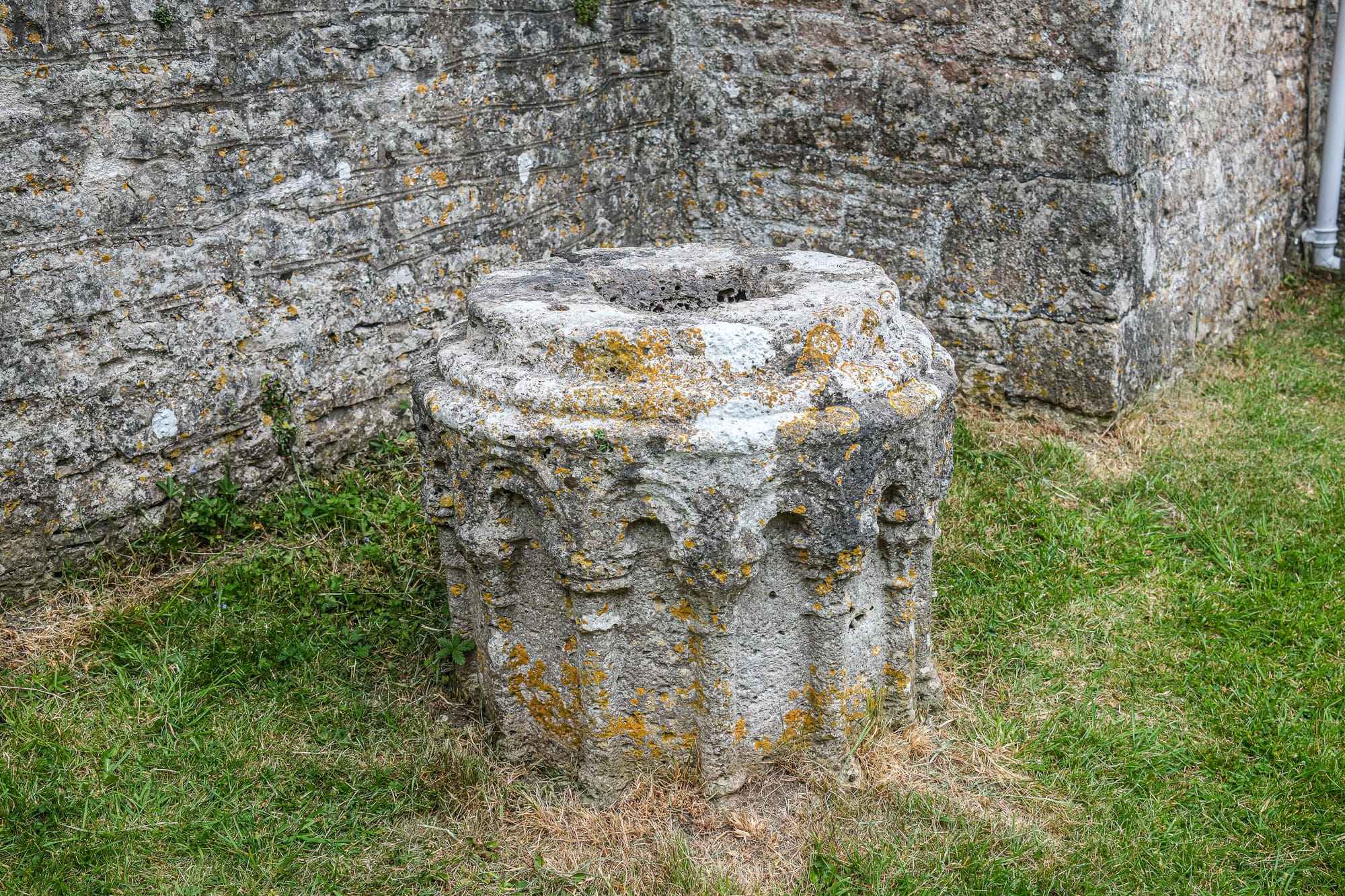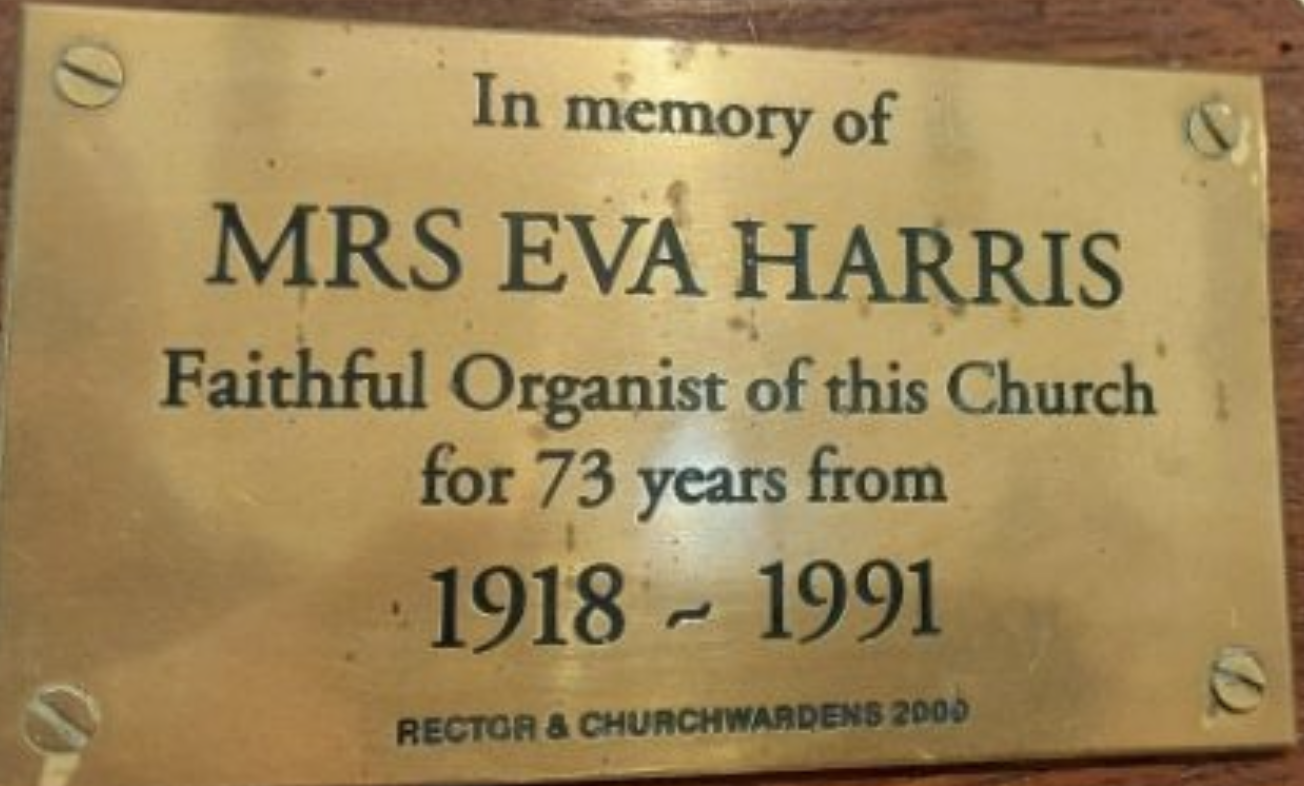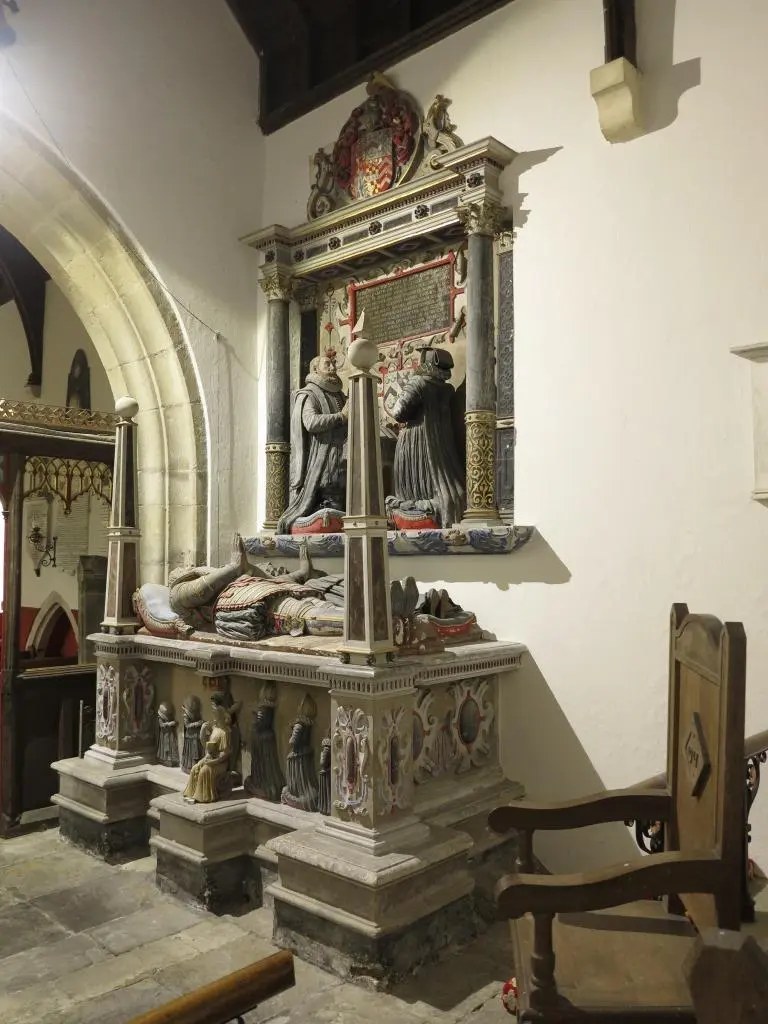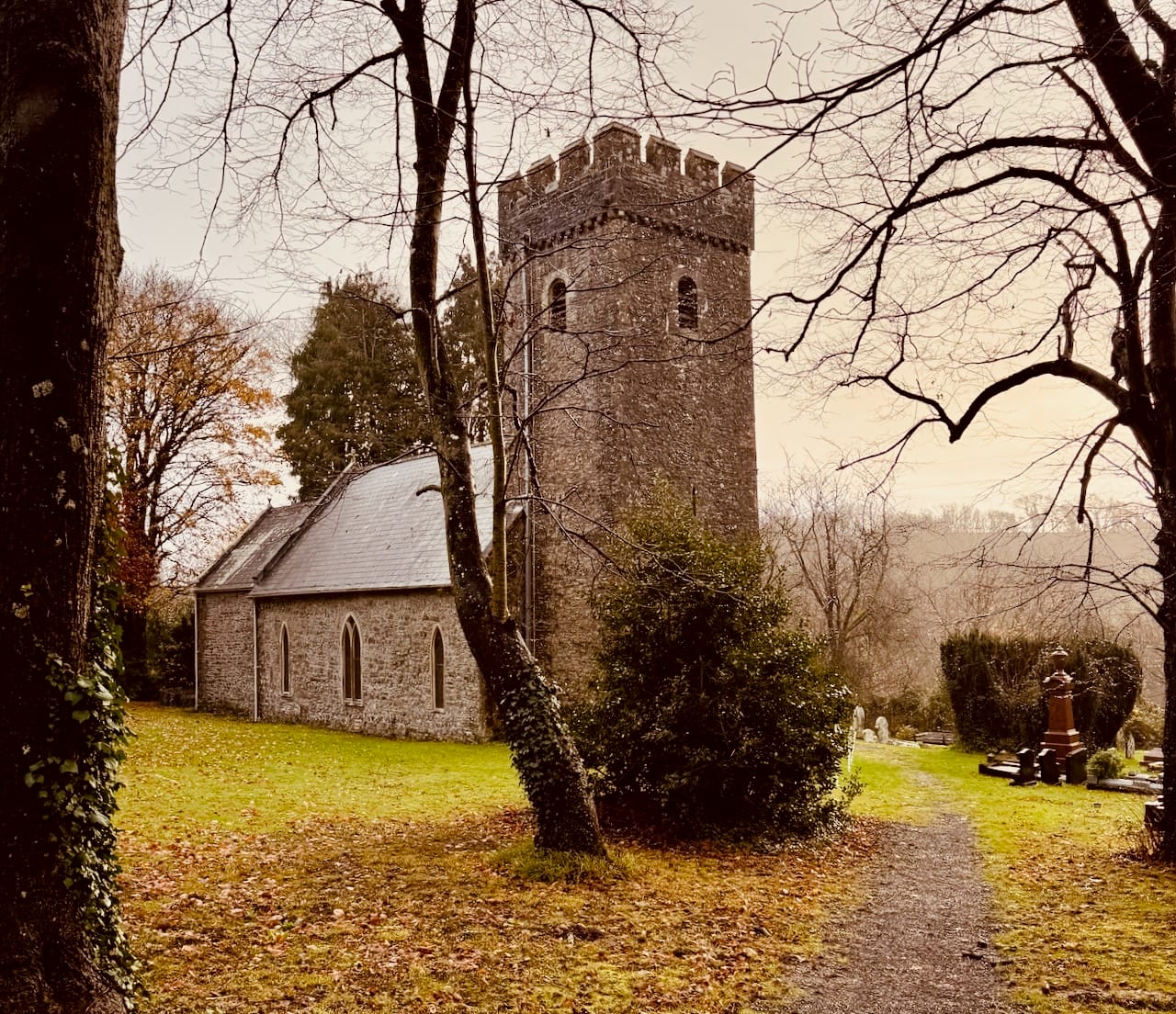THE FRIENDS OF ST ILLTYD'S
Supporting St Illtyd's, Llantrithyd, into the future
Inside this issue:
- Welcome
- The Basset Tomb
- Tower repairs
- Gill Baker's reflections
- Graveyard history
- Comments from visitors's book
Welcome - Hello Friends of St Illtyd's
My name is Michael John and I am the local priest/vicar with Pastoral oversight for St Illtyd's. Thank you for becoming a Friend of St Illtyd's, Llantrithyd.
This is the first of the leaflets we'll share with those who have generously agreed to support the maintenance of the church and churchyard at Llantrithyd. We aim to produce at least two issues each year to keep you informed of the work the Friend's scheme will be supporting. We will also share snippets of historical information and hear from local people who have long-established connections with Llantrithyd Church and the village.

We recognise that some of our supporters are not church attenders and this is why we are committed to only use funds raised by the Friends for maintenance of the Church and churchyard. That said, I trust we all love this building and its surrounds for all kinds of reasons and wish to ensure it remains well maintained for the benefit of future generations.
Some of you may already know that the Church is kept open every day during daylight hours. This has been our practice for about 3 years and even though we've had one or two minor negative incidents during this period the access has been generally welcomed and appreciated.
The visitor's book testifies to the value people put on being able to drop in and spend time in this peaceful and historic place. So, my first plea to you all as supporters of St Illtyd's is ensure you call in and enjoy what it offers whenever you are able. Why not encourage others to do the same? Young and old will find so much of interest here.
For this first leaflet we have decided to share with you some details about one of the glories of St Illtyd's; the Basset tomb, If history is your 'thing' then you are in for a treat! Have a happy Christmas and new year.
Michael
A PERSONAL REFLECTION: GILL BAKER
Alex Rees chatted with Gill Baker, who kindly shared some of her memories

Gill was born in Church House, Llantrithyd, in 1947. She moved to Maes-y-Ffynon in 1964 at the age of 17. On marrying Ron, she lived abroad for many years as he served in the Army, they settled in Barry in 1979, but always kept connections with the village.
Gill's mother was Val Watts (nee Harris), and her grandmother was Sarah Eva Harris, b. 1904. Eva moved to Church House in 1935 with her husband, David. They kept cows, horses, pigs and goats, which would graze in the churchyard. Val returned to Church house to look after her mother, Eva, until she went into a care home. Val remained in Church house until she could no longer look after herself, and finally she moved to Barry to live with Gill in 2008 (aged 80).
Church House was the schoolhouse until 1935. It belonged to the Church in Wales; however, the Schoolhouse on Tre Aubrey Lane was the old headmaster's dwelling.
Eva started playing the organ in church in 1918, aged 14, and continued until 1991. She was never formally trained and could not read music, yet she played for all services, including weddings and funerals. As the years progressed, her repertoire diminished, and she would apparently start to worry about playing at Sunday worship by the previous Wednesday.
On the arrival of Jo and Peter Williams to the village in 1991, a congregation member spotted Jo as a potential successor to Eva, and Jo has played ever since. So, only two organists in over 100 years, this must be some kind of record!
Recent entries from the visitors' book
"Beautiful and peaceful" James
"Found long-lost ancestors.."Alison, Kevin and Katie
"Bassett Family. Very happy to see this place" Lauren and Phil
"Descendents of Bassets of Beaupre. God bless all members of this community for this church. Thank you!" Christopher and Karen (USA)
"Sheltered from a storm"
Interesting graves
Within the Churchyard is a large family grave containing the remains of farmer John Perkins. He was born in 1760 and kept a diary for 14 consecutive years without missing a single day.
It gives a fascinating picture of family, farming, and social life in the Vale of Glamorgan during the Napoleonic Wars. The entry of December 1797 refers to his going to The Bear Inn at Cowbridge "to see French prisoners" captured after the abortive invasion of Fishguard.
He settled in Pentra Farm, and one of his main entertainments was coursing deer kept by Sir John Aubrey of Llantrithyd Place in Llantrithyd Park.
The Basset Tomb
"lamented by all who had the happiness of knowing her"

Perhaps the most notable and striking monument in the Church is the glorious Basset family Tomb on the left (North) side of the Church in the Chancel. John Basset died in 1554 and had acted as Surveyor of Lands to Queen Catherine Parr the sixth and final wife of Henry VIII.
Basset's second wife, Elizabeth, is depicted kneeling above the tomb facing John. Their daughter Elizabeth inherited their estate, and she married Anthony Mansel of Margam. These are the two figures shown lying on the tomb itself.
Elizabeth Mary Mansel, in turn, inherited the estate and married Sir Thomas Aubrey in 1586. It remained in the Aubrey family until 1910. There are still relatives of the Basset, Aubrey, and Mansel families who occasionally visit the church. Some recent visitors had travelled from Pittsburgh.
The smaller kneeling figures shown on the front of the monument are referred to as 'weepers', presumably because they depict children mourning the death of their parents. It's interesting to note that most predeceased them. Their names and death dates are shown on stone plaques to the left of the altar: "Elizabeth 1567, Edward 1573, Mary Aubre, Anne 1570, Ryce 1583, William 1573, Cissil".
Close investigation of the sanctuary floor shows some tombstones dedicated to some of the children. Touchingly, some of these request prayers be said for the souls of the departed child, an unusual departure for a family who would have officially embraced the reformed tradition. Praying for the departed would have very much been seen as a practice associated with the 'old' religion.
Flying louvres

Back to St Illtyd's louvres. Another challenge we faced was to locate a builder with the requisite skills to create a louvre but also able and willing to work safely at a great height. As it was impossible to do the work from within the bell tower, the most obvious solution was to deploy scaffolding, which increased the project's cost significantly. Some Churches that need small amounts of high-level work done save up and combine several jobs which necessitate the use of scaffolding to justify the outlay and make the job worthwhile for the builder; typically, churches often need some pointing work.

Those of you who have visited or walked through the grounds of St Illtyd's in recent months will have noticed a cordon of safety tape surrounds the tower's base. We felt it appropriate to set this up last Winter following an incident in which a warden and a builder nearly came to grief whilst inspecting the tower as one of the louvres from the windows became dislodged and fell to the ground.
Our Church wardens have been working tirelessly to effect a repair, but achieving this is not as straightforward as you might think. A later edition of the Friends leaflet will explain how the faculty process works in the Church in Wales, but suffice it to say that gaining permission to go ahead with work can be time-consuming and frustrating. St Illtyd's is a grade 2* listed building, so any repairs must ultimately be sanctioned by the Chancellor of the Diocese, having first gained the Diocesan Advisory Committee's recommendation (D.A.C.).
Despite the bureaucratic challenges involved in gaining a faculty, we recognise the importance of preserving the historical integrity and fabric of the Church by using appropriate materials and craftsmanship.
Our imaginative wardens even approached a team of steeplejacks who have also done tower repairs to ask whether their costs might be more competitive. The existing louvres are made of slate, and close investigation shows that our 'flying louvre' has delaminated to such an extent that it now resembles a rather puny roof slate as it lies on the ground. We did investigate the possibility of fitting a hardwood version, but the DAC ruled that we must opt for the original slate as a replacement.
Alex, one of our Church coordinators, has secured a grant to help fund this work, but it will only go so far in covering the costs of ongoing repairs to the building. The support of the Friends will help with projects such as this and ensure the church remains safe and usable into the future.
